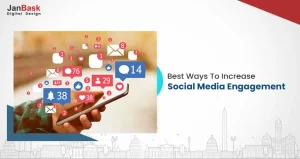
Have you ever noticed the advertisements that appear on your search engine result pages and other search engines? If you have noticed the ads then you are already familiar with pay-per-click, or pay-per-click advertising.
How well do you rate yourself in the world of paid advertising, on a scale of 1 to 10?
As a marketer, PPC is a skill that you should have, or at the very least, have a basic understanding of what PPC is, how it works, what are PPC campaigns and how small and big corporations leverage it to boost their sales.
Let's understand what is the concept of pay-per-click advertising here. We'll start with what are PPC campaigns, how does pay per click work, how to make money with pay-per-click, and the benefits of paid advertising before moving on to some important definitions that you should be familiar with. Along with the importance of PPC advertising services.
You have set up your business and everything is in its place like the product, inventory, logistics, team, etc but you don't know how to take of your business growth. How to increase your website's traffic and visibility and ultimately sales. You can't wait for 6 months to be on the top of the Google search engine results if you have an e-commerce store. You would want quick sales and PPC can rescue you out if you want quick results.
But what is PPC and how PPC works?
Pay-per-click or PPC is a form of advertising where the advertisers pay a certain amount every time users click on their ads. When done correctly, PPC can generate amazing leads for you. If you create a seamless user journey then it can result in a significant return on your PPC investment.
There are different types of PPC ads, but one of the most common types used by companies to promote their products and services is Search ads. These ads appear when consumers do online searches using a search engine like Google, particularly when they conduct commercial queries, which means that they are looking to buy something.
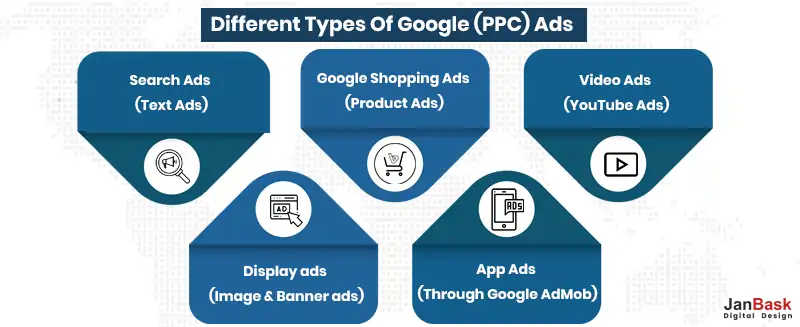
This could be anything from a mobile search (someone looking for "hardware store near me" on their phone), a local service search (someone looking for an AC repair or a car mechanic, someone shopping for a present (such as " Father's day special"), or a high-end item like software suites. These queries trigger pay-per-click ads.
In Pay-per-click advertising, the pay-per-click advertisers are only charged when a user clicks on their ad, that is why it is called "pay-per-click." There are different models on which PPC works i.e. CPC and CPM models which we will discuss in detail further.
Other forms of PPC advertising include:
The main aim of all digital marketing efforts is to rank a target keyword on the search engine result pages which can be done in several ways. Any digital marketing, whether paid or unpaid, carried out on a search engine like Google, or Bing is referred to as "search engine marketing" (SEM). SEM is a generic term that refers to both paid advertising and Search Engine Optimization, which is ranking organically for your keywords. It's vital to keep in mind that PPC campaign not just occurs on search engines but also on social media channels like FaceBook and Instagram.
"Cost-per-click (CPC)" is the sum that an advertiser pays for each click on your ad. Your CPC serves as your bid in an auction that determines where your ad will appear in the search engine result pages. A bigger bid, as you might expect, results in better ad placement. The highest price you're willing to get paid per click on your ad is the CPC that you select. The following formula calculates what you pay:
"(Competitor’s Ad Rank / Your Quality Score) + 0.01 = Actual CPC."
Let’s understand each term in the above equation.
This value determines the position of an ad on a search engine results page. It's equivalent to Quality Score x Maximum Bid.
This is the score that search engines assign to your ad based on your clickthrough rate (CTR), which is measured against the average CTR in that position, the relevancy of your keywords, the quality of your landing page, and your past performance on the Search Engine Result Pages.
This is the most you're willing to spend on each click on your ad.
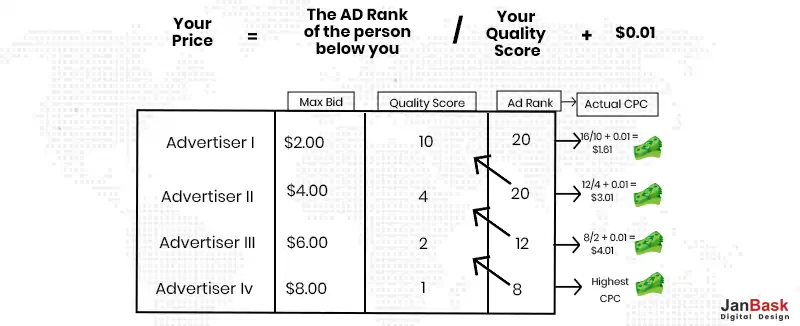
You have the option to set your CPC to the manual, where you select the maximum bid for your ads, or enhanced, where the search engines modify your bid based on your goals. Enhanced possibilities involve bid strategies that automatically adjust your bids based on clicks or conversions.
CPM is another name for Cost per thousand, which stands for cost per thousand impressions. The most typical use of Cost per mille is paid social and display ads. Other cost-per-use models also exist, like cost-per-engagement and cost-per-acquisition (CPA), but here we are going to stay with clicks.
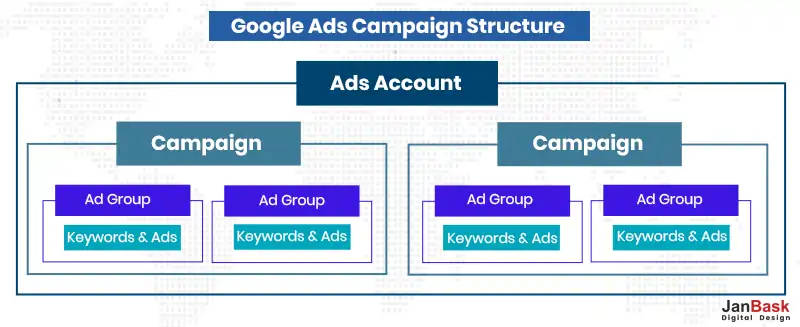 What are PPC campaigns and how to set them up? The initial step in setting up your PPC ads is selecting your ad campaign. Your campaign serves as the primary message or idea you want to get through in your ads.
What are PPC campaigns and how to set them up? The initial step in setting up your PPC ads is selecting your ad campaign. Your campaign serves as the primary message or idea you want to get through in your ads.
No one size fits everyone. Due to this, the ad manager creates a number of ads using a collection of closely related keywords as part of your campaign. You can select a CPC for each ad group you create.
Each ad in your ad group focuses on a certain set of relevant keywords. These keywords inform search engines of the terms or search queries that you want your ad to show next to in SERPs. Once you have identified the keywords that would rank your website/landing page, you can set a micro CPC for the keywords in your ads
Your keywords play an important role in informing your ad text. The text that you use in your ads (and landing page, for that matter) should match the keywords you target as it impacts your quality score based on how relevant your ads are.
A critical piece of component of your paid ad campaign is your landing page. Once the user clicks on your PPC ad, they land on your landing page. Make sure that you follow the best practices to increase conversions whether you are using a dedicated webpage, your homepage, or any other location.
There are several key steps that you should follow while preparing a PPC campaign:
Identify your target market: Identify the demographics of the audience you want your ads to reach, including their age, gender, location, interests, income, education, socio-economic status etc.
Set clear and specific goals: Determine what you want to achieve by running PPC campaigns. Set your goals clear with the onset of your PPC campaigns such as increasing website traffic, generating leads, or driving online sales.
Reseach keywords: Use keyword research tools to understand the user's intent while looking for the products online. Identify those terms and phrases and use them in your text ads and website content.
Write compelling ad copy: Create compelling headlines and descriptions for your ads to get people to click on your website.
Choose the best advertising platforms: Decide the best advertising platforms you want to use, such as Google Ads, Bing ads, Meta Ads (for Facebook and Instagram), etc.
Monitor and optimize your campaign: Tracking and monitoring the performance of your ads help to make adjustments to your campaign. Optimize your campaign to reach your goals effectively.
Try different targeting options and ad formats: Try out several ad types (such as text, image, and video) to find out which targeting options work best for your campaign.
Set a budget: Decide how much you want to spend on your campaign and make sure that you stick to your assigned budget, make money with pay-per-click.
Several well-known platforms offer PPC advertising solutions. Majority of the PPC management services like JanBask Digital Design, make use of the most well-known platforms such as - Facebook, Google, and Microsoft Bing.
Different ad platforms can present different results in the form of video (on YouTube or Facebook/Instagram Reels) and search, display, retargeting, and other formats.
For now let’s concentrate on Google and Facebook for PPC ads, both almost cover all ad formats.
Google is the unparalleled winner when it comes to running ads on search engines. It has unmatched global popularity. This is the reason why the fee for running Google ads are higher than the rest.
Advertisers place bids in order to have their ads seen, services offered, products advertised, or videos featured on Google. There is also an option to show display ads on mobile apps, youtube videos, and search partners.
Google Ads is the most popular pay-per-click system platform. There is a greater likelihood that your advertisement will be noticed by your target demographic and result in customer acquisition. Google ads is perfect not just for Fortune 500 companies but even for small businesses that want to garner more traffic and visibility and generate more leads.
Businesses and individuals can advertise their goods and services on the YouTube network with the help of YouTube ads. These ads can take different formats, including:
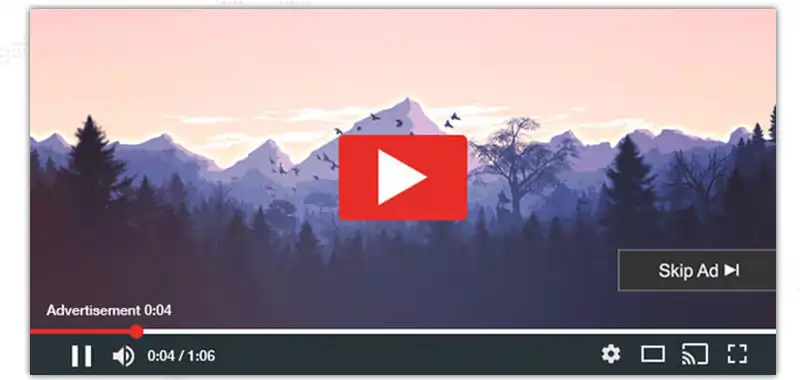
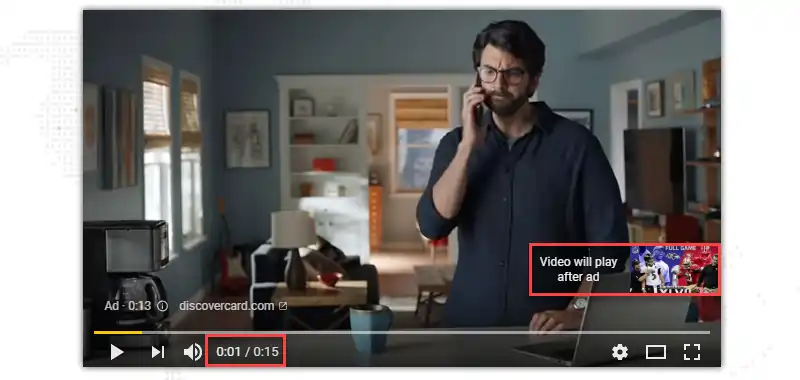
Pay-per-click advertisers choose the target audience based on characteristics including demographics, interests, and behaviors. YouTube ads are available for purchase on a cost-per-view (CPV) or cost-per-click (CPC) basis and the advertiser gets charged each time the ad is watched or clicked.
Facebook ads allow businesses and organizations to promote their goods and services on its platform. The ads appear on the news feed of Facebook users, the right-hand column of the desktop, and the stories on the mobile.
Facebook ads types:
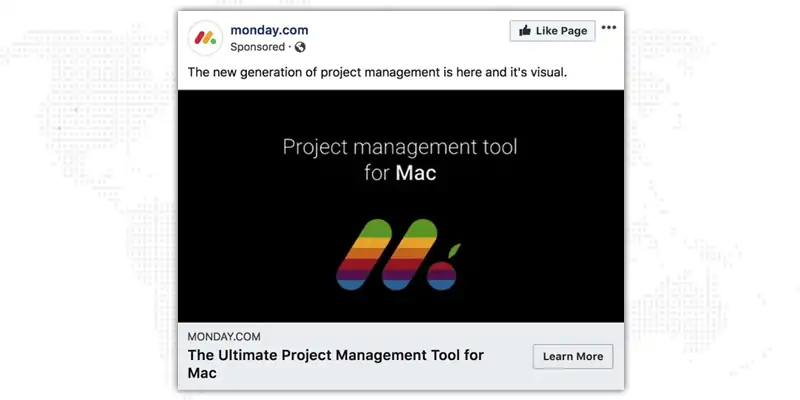
PPC advertising services design campaigns that aim at specific locations, interests, and demographics. Facebook's algorithm uses this information to display ads to those most likely interested in the products or services being offered.
Instagram Ads allow businesses to advertise their products and services on the Instagram platform. These ads are displayed as sponsored posts, which are easily incorporated into users' newsfeeds and look similar to ordinary posts in appearance.
Instagram offers several types of ads including the following:
Pay-per-click advertisers can choose a target audience based on characteristics including demographics, interests, and behaviors. Instagram ads are available for purchase on a cost-per-thousand-impressions (CPM) or cost-per-click (CPC) model and the advertiser is charged each time the ad is viewed or clicked.
LinkedIn ads enable companies and individuals to advertise their products or services on the site. How does pay-per-click advertising work on LinkedIn? These ads are made to reach a professional audience and are frequently used to generate leads, increase brand recognition, and promote job openings.
LinkedIn, owned by Microsoft, offers a variety of ads, including:
Pay-per-click advertisers target different sets of audiences based on factors like demographics, job titles, firm sizes, industries, skills, and behaviors. LinkedIn ads are available for purchase on a cost-per-click (CPC) or cost-per-thousand-impressions (CPM) basis, where the advertiser is charged each time the ad is clicked or viewed.
LinkedIn also provides a self-service platform for small and medium-sized organizations and a managed solution for larger businesses to run their campaigns.
Businesses and individuals can advertise on Twitter to promote their products or services. These ads are made to reach a wide range of audiences and are frequently used to generate leads, raise brand awareness, and boost website traffic.
Twitter provides a variety of ads, including the following:
Pay-per-click advertisers target a specific target audience based on characteristics such as demographics, interests, and behaviors. With Twitter ads, the advertiser is charged each time the ad gets engagement (like, retweet, reply, etc.) or clicked on (cost-per-engagement(CPE) or cost-per-click (CPC) respectively).
Twitter also provides a self-service platform for small and medium-sized organizations and a managed service for larger businesses to run campaigns.
Search-related PPC ads are the most common PPC ad format. How does these PPC ads work? When a user types a particular query (keyword or phrase) into a search engine (the most prominent ones being Google and Microsoft Bing), a search ad will show up at the top of the search engine results pages (SERPs). These ads, which are primarily text-based, are designed to be highly relevant to the user's search.
Pay-per-click advertisers normally pay each time a user clicks on one of their ads, and the cost of each click is known as CPC, or cost per click. Search ads are the most popular method used by businesses to advertise their products or services and increase traffic to their websites.
A display ad is a type of ad that appears on websites, mobile applications, and other digital platforms that often takes the form of a banner or other graphical element. Display ads can feature a range of media, including photos, videos, and interactive elements, and are created to be aesthetically pleasing.
Display ads are frequently used to market products or services, build brand awareness, or increase website traffic. Typically, display advertising can be purchased on a cost-per-impression (CPI) or cost-per-thousand-impressions (CPM) basis, which means that the advertiser is charged each time the ad is shown a specific number of times.
A video ad relies on video content to market your product, service, or brand These ads may be seen on a variety of channels, such as websites, streaming services like YouTube, and social media (reels or posts).
Pre-roll, mid-roll, and post-roll video ads on YouTube can show prior to, during, or following a video. These video ads can be skippable and non-skippable in nature. Skippable video ads allow viewers to skip the ads after 5 seconds. Non-skippable ads can't be skipped and must be watched before the video is viewed. There is another type of ad called bumper ads. Bumper ads are non-skippable video ads of up to 6 seconds that must be viewed before a video is viewed.
Video ads are generally interactive in nature and include elements like Calls to action, links, and other clickable components. They are usually purchased on a cost-per-view (CPV) or cost-per-click (CPC) basis, where the advertiser pays each time the ad is viewed or clicked.
Remarketing is a type of advertising that enables pay-per-click services to target consumers who have already interacted with your website or mobile application with ads. Remarketing ads are often displayed to consumers as they browse to other websites or mobile apps. They are designed to bring top-of-the-mind brand recall and entice the user to visit your website or app again.
Display, search, video, and social media ads are a few of the formats in which remarketing ads are delivered. They are usually purchased on a cost-per-click (CPC) and cost-per-thousand-impressions (CPM) model.
Remarketing campaigns designed by pay-per-click services are incredibly focused and successful in driving conversions and sales. They monitor the users' activity on a website or mobile app and then use that information to target ads to users as they visit other websites or use different apps. A cookie or pixel is placed on the user's browser or device to achieve this. This identifies the user and enables the display of the relevant ads.

PPC ad campaigns give full control to businesses total over how much money they want to spend.
You pay to google only when visitors click on the link leading them to your website. This might create a chance for you to convert that prospect into a customer.
Organic ranking is excellent to start with but getting to the top of the SERPs can take months or even years.
You probably don't have the time to wait for organic, social, or direct traffic to materialize if you run a startup or small business.
PPC ads run by PPC services can give you quick results here.
PPC services can help you quickly bring your website to the top of the SERP within hours of launching the campaign with optimized PPC ads.
It's simple to manage your budget, ad placement, and target keywords with PPC ads. You may also do A/B/ split testing with various ads to know which ad is performing best and can produce the highest return on investment. The successful ads can then be scaled up until they stop yielding the desired outcomes.
With PPC ads, you can target a warm audience that is prepared to purchase your products or services while skipping through the audience who are not interested at all.
You can place bids on keywords with the help of free tools like Google Keyword Planner to understand the user's intent. In addition to keywords, PPC ads offer targeting options like demographics or past online activity
Retargeting campaigns for targeting visitors who abandoned their shopping carts is another excellent way of making money with PPC ads.
Trying to gain free traffic from search engines is a little unsteady because of the numerous Google algorithm updates and more than 200 ranking factors. Here PPC campaigns come to your rescue if you want to rank your website.
You don't have to worry about algorithm updates while using PPC advertisements; instead, pay attention to how well your campaigns are doing.
Keywords are becoming more and more competitive. This makes it even more difficult for a business with a low domain authority to appear high in search results or to be viewed by its intended audience on social media.
PPC advertising can help you rank for keywords that your audience is searching for, regardless of your domain ratings.
Your PPC consultation services should complement rather than replace your search engine optimization (SEO) approach, so don't give up on SEO completely.
You want your upcoming PPC campaign to be a success. Let's now discuss some PPC strategies that will enable you to get maximum value out of your time and money.
Let's focus primarily on paid search ads.
PPC Ad Copy
If you bid on relevant keywords then your ads will show up to the right audience; and a crisp, compelling and concise ad copy will hook those prospects into clicking and reading your ad. Like your keywords, your ad must address the user's intent. Provide the specific information they are seeking and ensure that your words communicate that to your audience.
Each of the three elements that make up a search ad—the headline, the URL, and the brief description—has strict character limits. Make sure your ad copy does the following to make the most of this space:
Landing Page Best Practices
Possibly the most crucial aspect of PPC (after your ad copy) is the page that leads are directed to after clicking on your ad. This page must be highly targeted, relevant to your ads, fulfil the promises made, and provide a seamless user experience.
Why? The basic fact for having a high- converting landing page is to turn a new visitor into a lead or customer. A high-converting landing page also raises your Quality Score, which will result in better ad placements. There is nothing as bad as poorly designed landing page to diminish your PPC profits.
What should a PPC landing page include for a higher conversion?
What components should a PPC landing page have to boost conversions?
A/B test performed on your PPC Ads
As a marketer, you almost never introduce something to your audience without first testing it. The same applies to PPC campaigns. Your paid advertising campaign's A/B testing is just as important as all other elements. The goal of testing your ads is to Increase your clickthrough rate and conversion rate.
The good news is that testing only needs to be done on the title, description, landing page, and ads target keywords. Tweaks can be made and adjusted to any of these elements to check the results. Based on these tweaks, you can make improvements in your ads and know which ad is performing better.
You can make a list of all the possible tests you can conduct and prioritize them by the most significant impact. In order to avoid wasting money on advertising that doesn't perform well, you should let your ads run long enough to collect the data you need and test them early enough.
Maximizing your ROI
Increasing ROI on your advertising campaigns involves taking customer lifetime value and customer acquisition costs into account. Doing so enables you to decide how much is worth investing in a new lead and how much of that investment may come from paid advertising.
We need to discuss inputs and outputs to get more specific, which means lowering your input (cost per lead [CPL]) and boosting your return (income).
There are some things to watch out for that will impact both, so let’s try to break it down.
Ways to decrease Inputs:
Ways to increase Revenue:
Follow landing page best practices to increase conversion
Stay specific with your ads, follow best practices and go for quality leads. The better the leads, more likely you will have qualified customers.
The following are some important metrics to monitor for your PPC campaign.
Clicks are the total number of clicks that you receive on your ads. The relevance of your ad copy and the keywords you choose impacts your metric.
Pay heed to these metrics and improve your ad quality score. That will increase your conversion rate and decrease the ad spend.
1. What are pay-per-click campaigns? And how does PPC work?
PPC campagins, often known as pay-per-click advertising, is a particular form of search engine marketing designed to increase website traffic. Your ad displays in the search results when specific keywords are entered into a search engine. Pay-per-click advertising gets its name from the fact that you only have to pay when someone clicks on your ads.
2. What are the benefits of PPC ads?
Getting your website on the first page of search results is an onerous task. With PPC ads, not only does your website receive "front and centre attention," but it is also shown to customers who are explicitly searching for your product or service. In addition, these stunning ads may be less expensive for small firms to use than other forms of promotion.
3. What sites offer PPC advertising?
You have a variety of PPC advertising solutions at your disposal. Although Google Adwords is the most well-known, you should also look into a few others. Here is a short list of PPC advertising platforms most commonly used by PPC management company :
4. What are the components of a PPC ad?
You might choose to start by choosing a text ad. However, your ads can appear in the form of banners, videos, or product listings. You can use the guideline below before getting started.
Of course, each component has a maximum allowed length. For example, for headlines, you can have a maximum of 30 characters, and for descriptions 90 is the character limit.
5. How do you find the best keywords to use in an ad?
You should use a collection of keywords when creating an advertisement so that it shows in response to common searches. Your choice of keywords will either make or break your ad, so you need to choose wisely. There are a lot of tools that are used for keyword research. The primary one that is available for free is Google keyword planner and there are other paid research tools like Ahrefs, SEMRush etc.
Hope you’ve understood what are PPC campaigns, how does pay per click advertising work, and how does PPC advertising services can help you rank quickly on SERPs, it is clear that, whether your company has been established for years or just started yesterday, PPC is the boost you need to get an advantage over competitors, or at the very least move ahead of them in the SERPs.
Every business, from a small local service to a global businesses, needs to have a strong Google presence to grow or stay relevant in the market. Additionally, Google Ad campaigns designed by professional pay per click advertisers or PPC management company like JanBask, benefit all types of organizations to achieve their online business goals.
Online marketing has decreased the cost of advertising and democratized the way that any business that wants to expand online may do so on its own terms.
In the end, Google Ads is one of the finest ways to advertise your products or services online efficiently and affordably to attract new clients, boost sales, or establish your brand online.
Interested in our PPC Advertising Services?

K
This blog is a valuable resource for staying updated with the latest trends and strategies.
O
Thank you for providing this information. It’s a great resource for both beginners and experienced advertisers. Your blog has been a fantastic learning tool.
K
This PPC blog post is a fantastic resource for both beginners and experienced advertisers. The detailed explanations and tips on optimizing ad campaigns are incredibly helpful.
N
Your blog provides practical tips on how businesses can get the most out of their advertising budgets, which is invaluable in today’s competitive market.